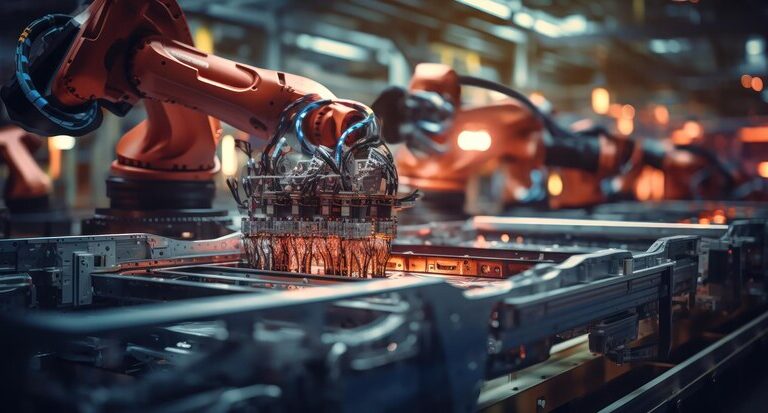Automotive manufacturing automation has transformed the way vehicles are produced. With advancements in technology, automation has increased efficiency, improved quality, and reduced costs. This article explores the impact of automation on automotive manufacturing and highlights the key benefits and technologies driving this revolution.
Enhancing Efficiency and Productivity
Automation has significantly enhanced efficiency in automotive manufacturing. Robots and automated systems can operate 24/7 without fatigue, increasing production rates and reducing downtime. Automated assembly lines streamline the manufacturing process, ensuring consistent output and minimizing human error. This leads to higher productivity and faster turnaround times.
Improving Quality and Precision
One of the major benefits of automotive manufacturing automation is improved quality and precision. Automated systems can perform tasks with a high degree of accuracy, ensuring that each component is produced to exact specifications. This reduces the risk of defects and increases the overall quality of the vehicles. Advanced sensors and monitoring systems detect any deviations in real time, allowing for immediate corrections.
Reducing Costs and Waste
Automation helps in reducing manufacturing costs and waste. By minimizing human intervention, companies can save on labor costs and reduce the risk of human error. Automated systems also optimize the use of raw materials, reducing waste and lowering production costs. Furthermore, the increased efficiency and precision of automated processes result in fewer defective products, reducing costs associated with rework and recalls.
Key Technologies in Automotive Manufacturing Automation
Several key technologies drive the automation revolution in automotive manufacturing:
-
Robotics: Industrial robots perform tasks such as welding, painting, and assembly with high precision and speed. They can work in hazardous environments, ensuring worker safety.
-
Artificial Intelligence (AI): AI-powered systems analyze data to optimize production processes and predict maintenance needs. This leads to smarter manufacturing and reduced downtime.
-
Internet of Things (IoT): IoT devices connect machines and systems, enabling real-time monitoring and data exchange. This improves process control and efficiency.
-
3D Printing: 3D printing technology produces complex parts quickly and cost-effectively. It allows for rapid prototyping and customization in automotive manufacturing.
The Future of Automotive Manufacturing Automation
The future of automotive manufacturing automation looks promising. Advancements in AI, robotics, and IoT will continue to drive innovation and efficiency. Autonomous mobile robots (AMRs) and collaborative robots (cobots) will work alongside humans, enhancing productivity and flexibility. Additionally, smart factories will leverage big data and analytics to optimize every aspect of the production process.
Conclusion
Automotive manufacturing automation is revolutionizing the industry by enhancing efficiency, improving quality, and reducing costs. The integration of advanced technologies such as robotics, AI, IoT, and 3D printing is driving this transformation. As the industry continues to evolve, the benefits of automation will become even more significant, paving the way for smarter, more efficient, and cost-effective automotive manufacturing. Embracing these advancements will be crucial for manufacturers to stay competitive and meet the demands of the future.

